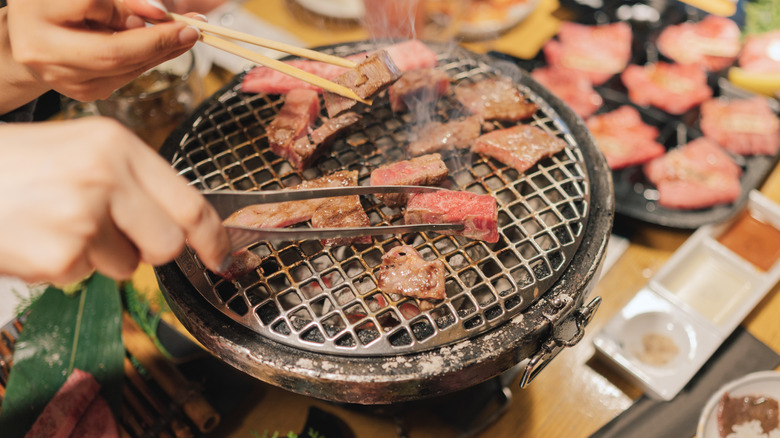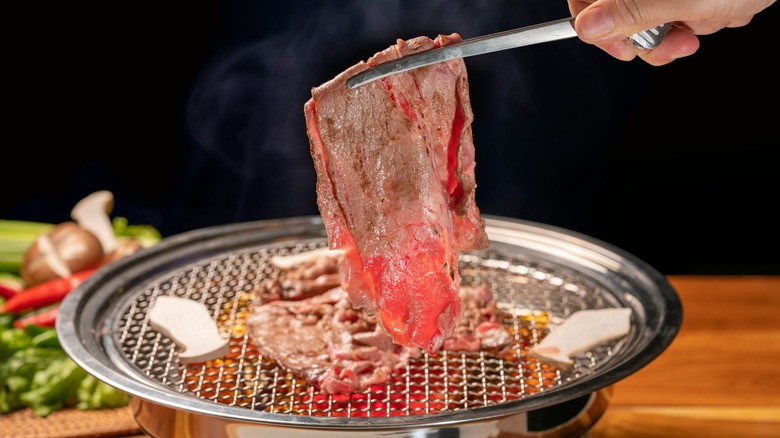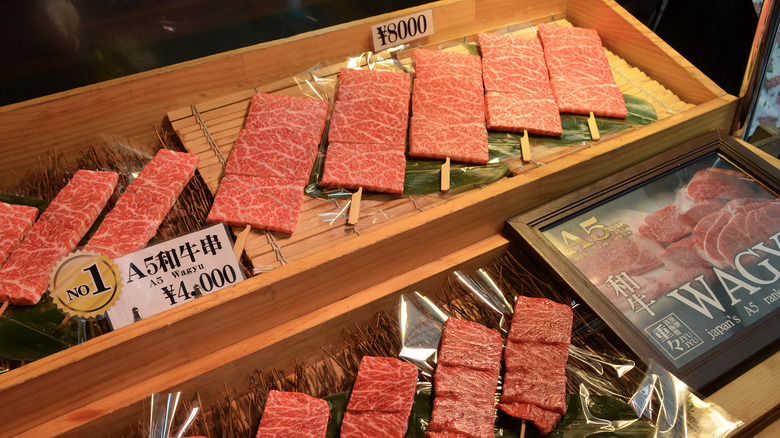The Best Temperature For Cooking Wagyu Steak
For decades, the term "wagyu" has been the icon of luxury and exclusivity in the restaurant business. This status is well-earned: The special cut of beef stands out from the rest thanks to its unparalleled marbling, tenderness, and flavor. Originally from Japan, Japanese cattlemen achieved this culinary delicacy by providing their cattle with exceptional care. Combined with the cattle's natural genetic disposition to produce marbled meat, the result is meat with extraordinarily high levels of marbling in high-BMS wagyu like the A5. Kobe beef (also a type of wagyu) is its only contender in this category.
This exceptional marbling also means wagyu demands a unique cooking approach. Unlike cooking a filet mignon, wagyu requires careful temperature management to preserve its rich, flavorful fat. If cooked too high and for too long, the fat will render out, causing the steak to lose the very qualities that define its luxury. Rather than creating a melt-in-your-mouth experience, the meat would become dry and chewy. This is why you'd want to flash-cook it at a very high temperature — at about 425 degrees Fahrenheit for only a few seconds. This will keep wagyu's signature buttery texture intact while giving you a tasty crust to boot!
The correct way to cook wagyu
Cooking wagyu steaks straight from the fridge, rather than letting them reach room temperature, is a pro tip for keeping all that delicious intramuscular fat intact. This approach ensures the center stays cool, preserving the steak's rich flavors while allowing the outside to develop a beautiful crust.
When it's time to cook, crank your pan up high, aiming for about 425 degrees Fahrenheit. For comparison, a typical American Angus steak only needs a pan heated to around 375 degrees Fahrenheit. The goal is to sear the wagyu quickly and develop a thin crust, then remove it from the heat as soon as possible. This method is why some of the most exquisite wagyu cuts, like Matsusaka wagyu tenderloin, are barely cooked for a few seconds, ending up with a sashimi-like rawness.
Chef Froulyne Dubouzet from Marie Akaneya in Paris explained that preserving the fat in this manner allows the steak to reach the perfect temperature from the warmth of your mouth upon your first bite. This is the secret behind the signature melt-in-your-mouth experience of professionally cooked wagyu, where the fat simply dissolves on your tongue!
American versus Japanese wagyu beef
Japanese wagyu beef is a sought-after delicacy rarely found outside of Japan. In the U.S., when you read a restaurant's menu with "wagyu beef" being listed, it's most likely American wagyu. This hybrid breed is created by mixing Japanese cattle with other types like Angus. This is to get around Japanese laws, which forbid Japanese cattle from being exported outside Japan to preserve their genes. While American wagyu has marbling somewhat similar to its Japanese counterpart, it's generally less fatty — a byproduct of its half-Angus ancestry.
As a result, American wagyu steaks might benefit from a slightly higher cooking temperature to ensure a proper sear and crust formation without overcooking the interior. However, the difference in cooking temperature between American and Japanese wagyu is minimal, and the key principles of high-heat searing and precise temperature control remain the same for both. Ultimately, what'll make or break your wagyu steak will depend on your attention to detail and how well you're able to juggle the heat as you cook it.


